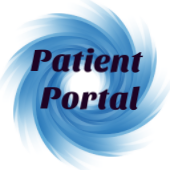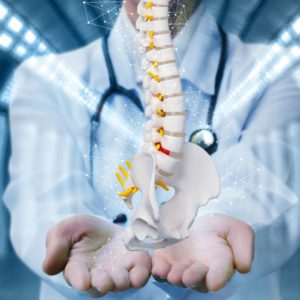Welcome To Orthopedic Spine Care of Long Island
Spine Specialist in Commack
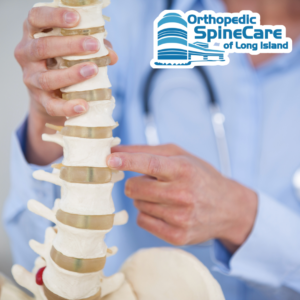
How is Scoliosis Treated?
How is Scoliosis Treated?
Are you looking for a spine specialist in Commack? Are you suffering from neck and back pain? Dr. Arnold Schwartz and Dr. Paul Alongi are spine specialists in Commack that have provided comprehensive care to individuals with neck and back issues since 1999. Dr. Schwartz and Dr. Alongi are board-certified orthopedic surgeons with specialties in spinal surgery. Please continue reading below to learn more about scoliosis and its treatment.
What is Scoliosis?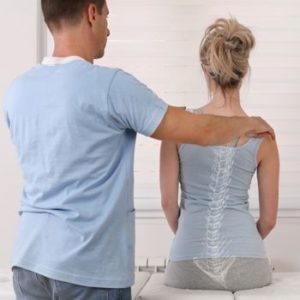
Scoliosis is a sideway curvature of the spine. If you see your pediatrician regularly throughout your adolescent years, you will likely be diagnosed with scoliosis. The cause of childhood scoliosis is unknown. Most scoliosis cases are mild, but some can be severe. If you suffer from mild to severe scoliosis, you may have issues breathing and back pain.
Symptoms of Scoliosis
- Uneven shoulders
- Uneven waist
- One hip higher than the other
- Rib cage flare
- One shoulder blade projecting more than the other
Risk Factors
- Age
- Sex
- Family history
How is it Treated?
There is no one size fits all treatment for scoliosis. Often those who have scoliosis go untreated. Depending on the severity of your scoliosis, you may be required to wear a brace. A brace is used to stabilize and support the back and can help correct the curve over time. If you have a severe case of scoliosis, you may require surgery. Exercise has proven to be beneficial for those with scoliosis in that it helps improve their overall health. In addition to exercising, stretching may also help those with scoliosis by improving their flexibility and overall physical function. Suppose you believe you have scoliosis. In that case, it is best to see a doctor as soon as possible to get evaluated and determine the best treatment plan to correct it or prevent it from worsening over time.
Contact OSCLI A Spine Specialist Long Island
If you are suffering from what you believe is neural foraminal stenosis and are looking for a scoliosis specialist Long Island, contact Orthopedic Spine Care of LI today. Click here to learn more about how we can help treat your scoliosis!
What is a Collapsed Disc?
Our backs are significant to our everyday movements and protect essential body systems. They allow us to perform specific actions like walking and maintaining flexibility, but the back also houses our spinal cord. It is necessary to protect the spinal cord as this is a significant part of the central nervous system and the brain. Thirty-three stacked vertebrae line the back from the neck to the tail. In between each of these vertebrae are cushions called discs. Our discs protect the vertebrae and prevent them from rubbing against one another. These discs are under a tremendous amount of pressure. Due to trauma or wear over time, our discs can collapse. A collapsed disc is known as a decrease in the height of the disc. This collapse leads to significant pain caused by the pressure put on the nerves in the back. It is excruciating, but our team at Orthopedic SpineCare of Long Island is here to help! Our spine specialist in commack, are experienced and trained to help relieve your pain and get you feeling better!
Symptoms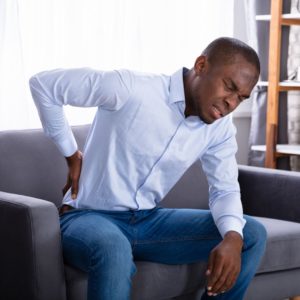
Unfortunately, collapsed discs can be very painful and can tremendously interfere with your daily life and activities. It is essential to be on the lookout for the following symptoms if you think you might have a collapsed disc:
- Numbness: since your back houses the spinal cord, it is susceptible to nerve issues like numbness. If a disc is shrinking, there can be excess pressure on the nerves within the back. This can lead to the feeling of numbness that travels to areas such as your legs.
- Back Pain: if you are continuing to experience back pain that will not go away, there is a strong possibility that you could have a collapsed disc. Again, this is either caused by trauma or aging over time. If you have had an injury to the back and have pain, it may be time to see a doctor.
It is vital to take back pain seriously, leading to extreme outcomes such as paralysis. If you think you have a collapsed disc, see our Long Island spine specialists!
Contact Our Spine Specialist In Long Island
Orthopedic SpineCare of Long Island has been taking care of back pain for many years! We want to help ensure you live pain-free and continue to do your daily activities. We recommend that you make an appointment with our back pain specialist Long Island, to get back to feeling like yourself! Contact us today to make an appointment!
What Is Neural Foraminal Stenosis?
Neural foraminal stenosis is a condition that results when the foramen, or openings, through which the nerves pass become narrowed. This can happen due to various reasons, including the natural aging process, injury, or disease. When the foramen narrows, it can pressure the nerves and cause pain, numbness, tingling, and weakness. In some cases, neural foraminal stenosis can also lead to paralysis. Are you suffering from neck and back pain? Are you experiencing numbness in the arm, hand, or leg? You may have neural foraminal stenosis. Continue reading below to learn more about our commack orthopedic and spine specialists at Orthopedic Spine Care of LI can help treat neural foraminal stenosis!
Neural Foraminal Stenosis
Neural foraminal stenosis is when the neck, the upper part of the back, or the lower back compresses or narrows, thus trapping the nerve root at the bone spur.
Symptoms Of Neural Foraminal Stenosis
- Neck pain
- Back pain
- Muscle weakness
- Tingling or burning sensation
- Trouble walking
- Issues with balance
- Numbness in the arm, hand, or leg
Causes Of Neural Foraminal Stenosis
- Degenerative lumbar spine
- Degenerative disk
- Herniated discs
- Rheumatoid arthritis & osteoarthritis
- Trauma
How To Treat Neural Foraminal Stenosis
There are several ways to treat neural foraminal stenosis. How to treat neural foraminal stenosis depends on the severity of the condition.
- Exercise is believed to have helped neural foraminal stenosis by improving the overall spinal column for mobility and strength. With exercise, weight loss may occur, and depending on the individual, weight loss may help.
- Another form of treatment is injections. If exercise and injections do not provide significant relief, surgery may be necessary.
- Some people may be able to find relief with over-the-counter or prescription pain medications. Others may need to undergo physical therapy to help strengthen the muscles around the affected area. In some cases, surgery may be necessary to widen the foramen and relieve the pressure on the spinal nerve.
Contact OSCLI A Spine Specialist in Commack
If you think you may be suffering from neural foraminal stenosis, it’s important to see a back pain doctor Long Island for an accurate diagnosis. Once the cause of your symptoms has been determined, we can develop the best treatment plan for you. If you are suffering from neural foraminal stenosis and are looking for a Commack spine specialist, contact Orthopedic Spine Care of LI today!
What is Arthritis of The Spine?
Arthritis of the spine is a common condition that can cause pain, stiffness, and other symptoms. The most common type of arthritis of the spine is osteoarthritis, which occurs when the cartilage that cushions the bones wears down over time. Different types of arthritis, such as rheumatoid arthritis, can also affect the spine. If you are located in Huntington, NY, and need the best back doctors in commack, please look no further than our facility. Click here to learn more today!
Arthritis of the spine is a common condition, particularly among older adults. It can cause pain, stiffness, and other symptoms. The most common type of arthritis of the spine is osteoarthritis. This occurs when the cartilage that cushions the bones wears down over time.
Symptoms
The most common symptom of arthritis of the spine is pain. It can range from mild to severe and may worsen with activity or at night. Other symptoms include:
- Stiffness
- Tenderness
- Swelling
- Inflammation
- Loss of range of motion
- Numbness or tingling
- Weakness
- Difficulty walking or standing upright
Causes
- Age: As we get older your body is more likely to develop arthritis of the spine.
- Weight: Being overweight or obese puts extra strain on the joints and can lead to arthritis.
- Injury: An injury to the spine, such as a fracture, can later increase your risk of developing arthritis.
- Repetitive motion: Repeating the same motions repeatedly can put stress on the joints and lead to arthritis.
- Genetics: If you have a family history of arthritis, you may be more likely to develop it yourself.
- Diseases: Certain diseases, such as diabetes, can increase your risk of developing arthritis.
Treatment
There is no cure for arthritis of the spine, but there are treatments that can help relieve the pain and other symptoms. Treatment options include:
- Medications: Over-the-counter or prescription medications can help reduce pain and inflammation.
- Exercise: Stretching and strengthening exercises can help improve range of motion and flexibility.
- Weight loss: Losing weight can take pressure off the joints and reduce pain.
- Surgery: In some cases, surgery may be necessary to repair damaged joints or correct other problems.
Arthritis of the spine is a common condition that can cause pain, stiffness, and other symptoms. However, since there is no cure, treatments can help relieve the pain and other symptoms. These include medications, exercise, weight loss, and surgery.
Contact Our Long Island Spine Specialists Today!
Arthritis of the spine is a painful condition that should be treated to improve quality of life. If you think you may have arthritis of the spine, talk to our spine surgeons Commack at Orthopedic Spine Care LI about treatment options today. Discover how our team can help!

